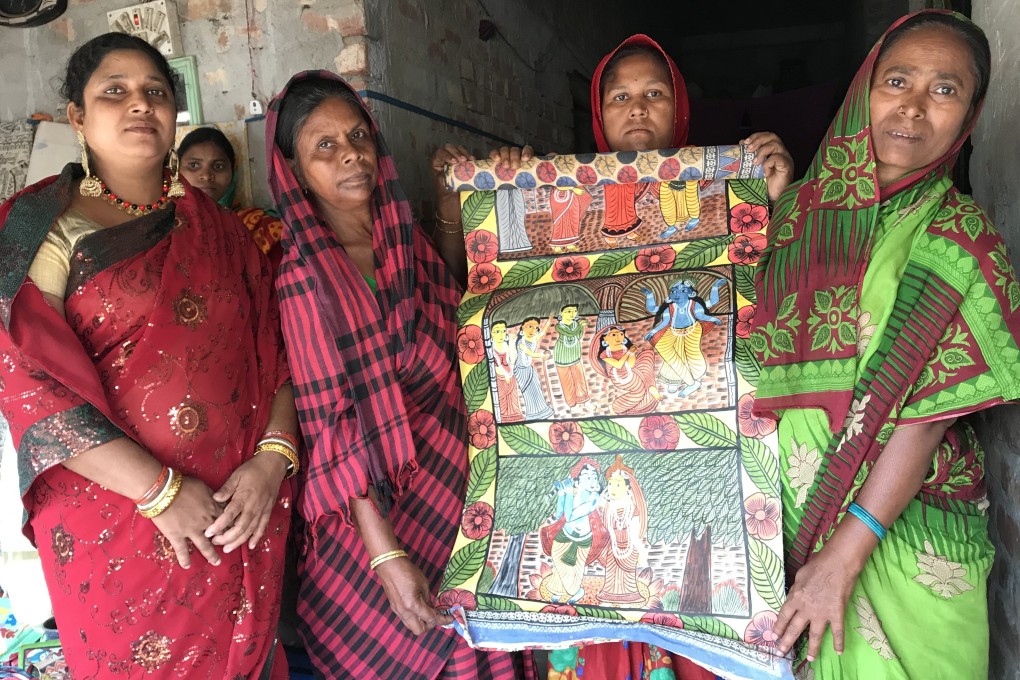Indian folk artists use centuries-old tradition to highlight modern issues, bring Muslims and Hindus together
- Their numbers are dwindling, but folk artists in West Bengal are determined to preserve a tradition linked to the oral histories of Hindu mythologies
- They do so by using the art form to comment on contemporary issues like climate change, child marriage, anti-Muslim hate and even India’s moon landing

The stirring performance unfolded at the International Seminar and Festival of Oral Traditions in June, where Saira also presented a captivating 3-metre-long (10-feet) cloth painting. Her art denounced the practice of child marriage, earning her a resounding round of applause from the packed hall.
A patua (folk painter) hailing from West Bengal, Saira cherished this opportunity to introduce her unique storytelling art, known as patua sangeet (songs by folk painters), to a global audience.
“We want to use this heritage art to raise awareness about contemporary issues,” said the 36-year-old.

The term chitrakar, meaning painter, is used as a surname by these artists to align themselves with the caste of folk painters, seeking greater respect from the predominant Hindu community despite being of Islamic faith.
